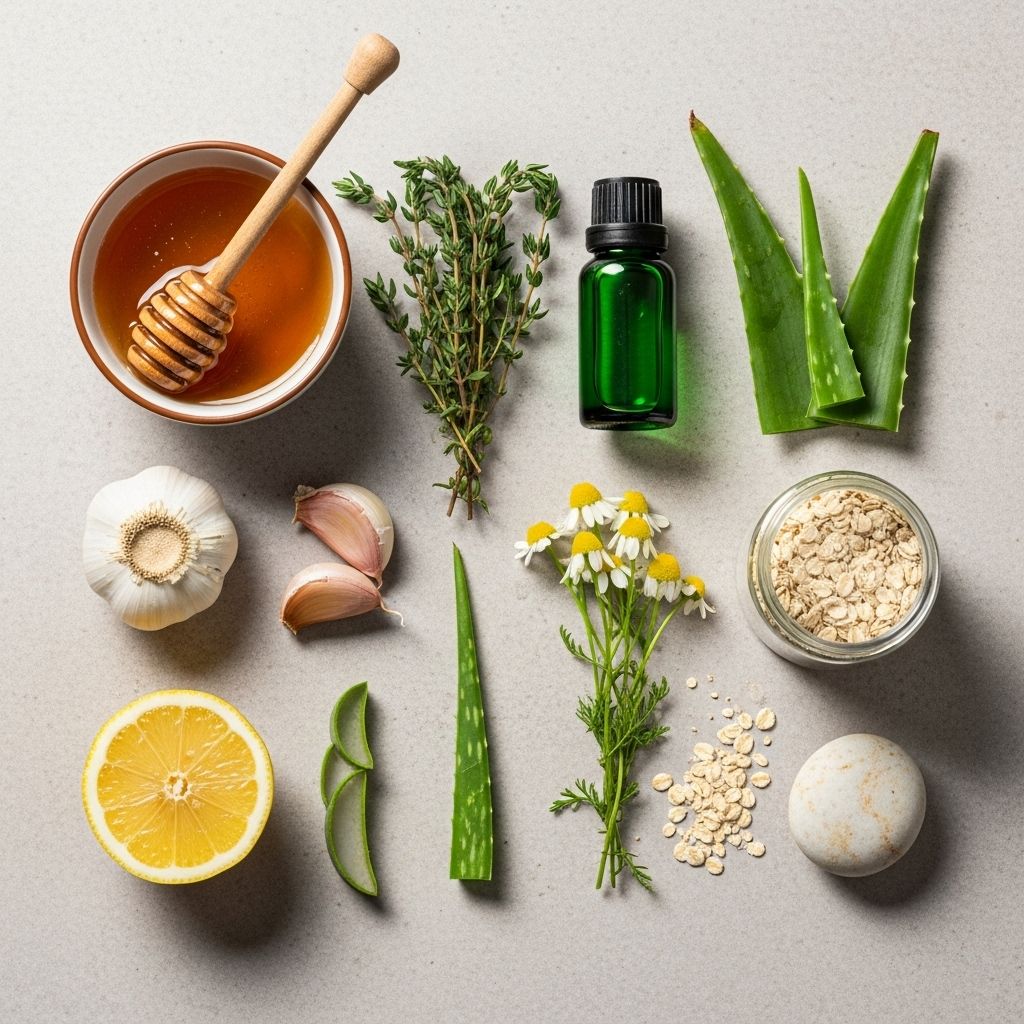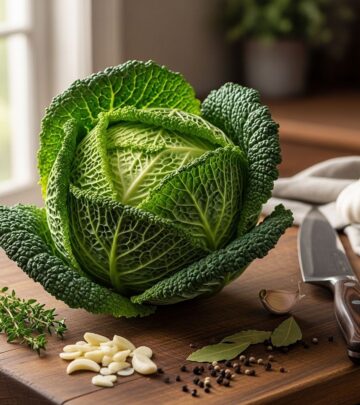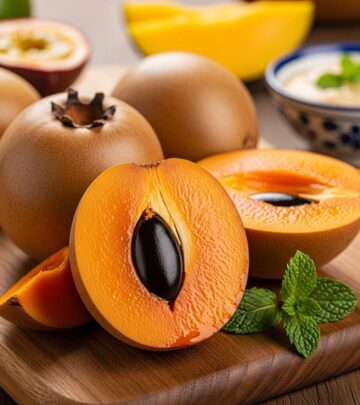Natural Remedies For Impetigo: Home Treatments & Essential Care
Plant extracts soothe irritation as gentle care restores skin’s protective barrier.

Impetigo is a highly contagious bacterial skin infection that most commonly affects infants and young children, but can occur in people of any age. Characterized by red sores that quickly rupture, ooze for a few days, and then form a honey-colored crust, managing impetigo promptly is crucial to prevent its spread and complications. While antibiotics remain the mainstay of treatment, many seek natural remedies for mild cases or to complement medical therapies. This article explores the causes, symptoms, natural treatment options, precautions, and answers key questions about impetigo in a structured, research-backed manner.
What Is Impetigo?
Impetigo is a superficial skin infection caused primarily by Staphylococcus aureus and, less commonly, Streptococcus pyogenes. It often affects exposed skin areas such as the face, arms, and legs. Though highly infectious, impetigo is usually not serious and can be treated effectively.
- Common in children, but also seen in adults
- Two main forms: Non-bullous (crusted) and bullous (blistering)
- Highly contagious and can spread rapidly via close contact or sharing personal items
Symptoms Of Impetigo
- Red sores or blisters, often around the mouth, nose, or limbs
- Sores quickly rupture and ooze yellowish fluid
- Development of characteristic honey-colored crusts
- Itching and mild pain around affected areas
- In bullous impetigo, larger fluid-filled blisters that burst and form thin crusts
Causes And Risk Factors
Impetigo occurs when bacteria enter through broken skin caused by cuts, scrapes, insect bites, or conditions like eczema. Major risk factors include:
- Young age (most common in children ages 2–5)
- Warm, humid environments
- Close physical contact (schools, daycares, sports teams)
- Poor hygiene or pre-existing skin conditions
- Immune suppression
Natural Remedies For Impetigo
While antibiotics are effective and usually necessary for moderate to severe cases, certain natural remedies and home care measures can support healing, reduce discomfort, and help prevent complications. These remedies are best suited for mild infections or as adjuncts to conventional treatment. Consult with a healthcare professional before starting any natural remedy, especially on children or when using alongside prescribed antibiotics.
Aloe Vera
Aloe vera gel is renowned for its anti-inflammatory and antibacterial properties. It helps soothe irritated skin, reduce redness, and promote healing of lesions associated with impetigo.
- Apply pure, organic aloe vera gel directly to the affected area
- Let it absorb into the skin before rinsing off
- Repeat 2–3 times daily
Honey (Especially Manuka Honey)
Raw or Manuka honey is traditionally valued for its strong antibacterial activity. Research indicates Manuka honey can inhibit Staphylococcus and Streptococcus strains involved in impetigo. It also promotes wound healing and soothes skin.
- Apply a thin layer of Manuka or raw honey to clean sores
- Leave on for 20–30 minutes before rinsing gently with warm water
- Repeat twice daily
Tea Tree Oil
Tea tree oil has demonstrated antimicrobial efficacy against many skin pathogens, including those responsible for impetigo. It also helps reduce inflammation.
- Never use undiluted: Mix 2–3 drops in one tablespoon of carrier oil (like coconut or olive oil) or water
- Apply with a clean cotton swab to sores
- Do not use on children under six; risk of skin irritation exists, so always patch test
Neem Oil
Neem (Azadirachta indica) oil contains natural antibacterial and antifungal compounds effective against bacteria linked to impetigo. Traditionally used in Indian medicine, it helps heal skin infections and soothe irritation.
- Apply a few drops (diluted in a carrier oil) to the affected area
- Follow label instructions for proprietary products
- Repeat 2–3 times a day
Turmeric Paste
Turmeric contains curcumin, a powerful antimicrobial and anti-inflammatory compound. Studies suggest turmeric paste can help fight Staphylococcus and Streptococcus.
- Mix turmeric powder with a little water to form a thick paste
- Apply directly on lesions and leave for 20 minutes
- Rinse off with lukewarm water; use 1–2 times daily
Garlic
Garlic is known for its natural antimicrobial and immune-boosting properties.
- Crush one or two cloves and apply the juice (diluted with a few drops of olive oil) to the affected area – avoid broken skin as it can cause burning
- Let it sit briefly, then rinse off
Chamomile
Chamomile has anti-inflammatory, antibacterial, and calming effects. It can help reduce swelling and discomfort.
- Brew strong chamomile tea, cool completely, and use as a gentle wash
- Alternatively, apply chamomile-infused oil to lesions 1–2 times a day
Grapefruit Seed Extract
Grapefruit seed extract has demonstrated antimicrobial activity, according to studies, especially against Staphylococcus species.
- Dilute as per manufacturer’s instructions before topical use
- Using undiluted extract can irritate or burn the skin
Eucalyptus Oil
Eucalyptus oil is backed by several studies for its antibacterial effects against skin pathogens.
- Always dilute before use: add two to three drops to a tablespoon of water or carrier oil
- Apply as a topical wash
- Do not use on young children, and never ingest
Usnea (Usnea Barbata)
Usnea, sometimes called ‘old man’s beard,’ is a lichen with proven antibacterial activities against Staph and Strep.
- Use a few drops of diluted usnea tincture as a topical wash on sores
- Undiluted extracts may sting on open wounds
Coconut Oil
Virgin coconut oil contains lauric acid, known for its antibacterial and moisturizing properties, which can provide relief and help prevent secondary infection from scratching.
- Apply a small amount to clean, dry skin 1–2 times daily
Olive Oil
Olive oil’s anti-inflammatory properties and antioxidants may help soothe irritation associated with impetigo. While not a primary antimicrobial, it is an effective, gentle moisturizer for dry or crusty lesions.
- After cleaning the area, apply a thin layer to keep skin moist
Hydrogen Peroxide (Diluted)
Hydrogen peroxide is a well-known antiseptic that can be applied to impetigo lesions to reduce surface bacteria and promote wound cleansing.
Note: Always dilute 3% hydrogen peroxide with equal parts water and avoid using on large, deep, or highly sensitive areas, and never on infants without medical supervision.
Table: Popular Natural Remedies For Impetigo — Properties & Precautions
| Remedy | Main Benefit | How To Use | Precaution |
|---|---|---|---|
| Aloe Vera | Soothes, heals, antimicrobial | Apply gel 2–3 times daily | Test for skin allergy first |
| Honey (Manuka) | Antibacterial, promotes healing | Apply directly; rinse after 20-30 min | Not for those allergic to honey |
| Tea Tree Oil | Reduces bacteria/inflammation | Dilute and apply topically | Patch test; not for young children |
| Neem Oil | Antibacterial, skin healing | Apply diluted oil 2–3 times/day | Test for reaction |
| Turmeric | Antimicrobial, anti-inflammatory | Make paste and apply to area | May stain skin; avoid eye contact |
| Grapefruit Seed Extract | Inhibits bacteria growth | Dilute before use | Irritant when undiluted |
| Eucalyptus Oil | Antibacterial action | Diluted topical wash | Never ingest; avoid in infants |
| Usnea | Broad-spectrum antimicrobial | Topical diluted tincture | Not for open wounds undiluted |
| Coconut Oil | Moisturizes, antibacterial | Smooth on affected area | Rarely causes allergy |
| Olive Oil | Moisturizes, soothes | Apply thin layer | May clog pores in some |
| Hydrogen Peroxide | Disinfects lesions | Dilute before use | Avoid overuse; mild irritant |
Essential Home Hygiene and Care Tips
- Gently wash affected skin daily with mild soap and water
- Use separate towels, bedding, and washcloths to prevent spreading
- Keep nails short to discourage scratching
- Wash hands thoroughly after touching the infected skin
- Avoid sharing personal items (clothing, razors, combs)
- Cover lesions with nonstick dressings
- Disinfect frequently touched surfaces and toys
- Launder contaminated items in hot water with detergent
When To See a Doctor
- If symptoms worsen or do not improve with home treatment
- For infants, the elderly, or immunocompromised individuals
- If lesions are widespread, painful, or associated with fever
- Any signs of severe infection or complications, such as redness spreading rapidly, swelling, or pus formation
Possible Complications Of Impetigo
- Cellulitis: Deeper skin infection requiring intensive medical treatment
- Post-streptococcal complications: Rare, including acute glomerulonephritis or rheumatic fever, particularly with Streptococcus pyogenes
- Scarring (rare) if lesions are deep or extensively scratched
- Infecting others through direct or indirect contact
Preventing Impetigo: Tips & Best Practices
- Encourage regular handwashing with soap
- Promptly clean all minor cuts, scrapes, and insect bites
- Bathe daily, especially in hot, humid conditions
- Discourage scratching or touching affected areas
- Keep children with impetigo home from school or day-care until no longer contagious (typically 24–48 hours after starting antibiotics or crusts have dried out)
- Follow treatment instructions and complete prescribed antibiotic courses fully if given
Frequently Asked Questions (FAQs)
Q: How long does impetigo take to heal?
A: With proper treatment, impetigo typically heals within 7–10 days. Natural remedies may support healing but antibiotics are more effective for faster recovery. If new sores appear after a week, consult a healthcare provider.
Q: Are natural remedies sufficient for treating impetigo?
A: Mild local infections may improve with natural remedies and hygiene, but antibiotics offer more reliable cure and prevent spread or complications. Always talk with a healthcare professional before relying solely on home remedies, particularly for children and those with weak immune systems.
Q: Can impetigo recur?
A: Yes, especially in children or in crowded environments. Good hygiene, timely treatment of minor skin breaks, and avoiding close contact when infected reduce recurrence risk.
Q: Is impetigo contagious?
A: Very. It spreads through skin-to-skin contact and via contaminated surfaces, towels, or clothing. Prompt treatment and careful hygiene are vital to control its spread.
Q: Do over-the-counter creams help?
A: Most over-the-counter antibiotic creams (such as Neosporin) are not recommended for impetigo as they may not be effective against causative bacteria. Prescription topical/oral antibiotics provide the best results.
Key Takeaways
- Impetigo is a common but contagious skin infection treatable with antibiotics and supportive natural remedies.
- Natural remedies like honey, tea tree oil, aloe vera, and neem can provide symptom relief and mild antibacterial effects but are best used alongside medical advice.
- Good hygiene and prompt lesion care help speed healing and prevent spread.
- Seek medical consultation for extensive, recurrent, or non-healing infections.
References
- https://www.healthline.com/health/home-remedies-for-impetigo
- https://www.knightspharmacy.co.uk/services/impetigo-treatment/
- https://www.goodrx.com/conditions/skin-infection/impetigo-treatment
- https://pmc.ncbi.nlm.nih.gov/articles/PMC7765423/
- https://findado.osteopathic.org/impetigo-common-skin-infection-children
- https://www.cincinnatichildrens.org/health/i/impetigo
- https://www.mayoclinic.org/diseases-conditions/impetigo/symptoms-causes/syc-20352352
- https://www.nationalnutrition.ca/articles/health-concerns/impetigo
- https://www.healthdirect.gov.au/impetigo
Read full bio of medha deb












